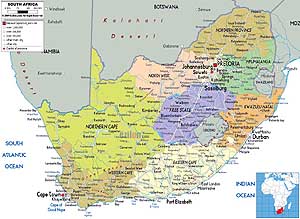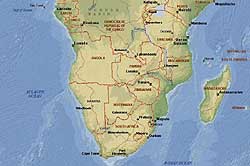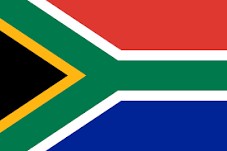-
- South Africa Map
|
-
- Southern Africa Map
-
|
|
-
|
- latest picture:
March 12, 2015
|
-
-
-
-
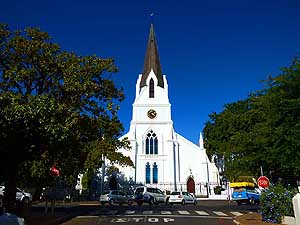 -
|
-
-
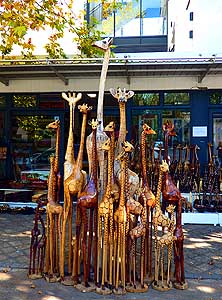
|
-
-
-
-
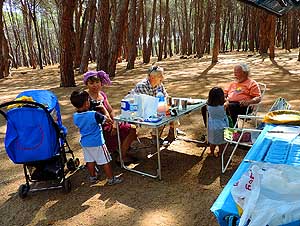
|
-
091
The Moederkerk Church
- (Motherchurch) is the oldest church in
the
- touristy colonial town of Stellenbosch, built
- 1719-1723. Stellenbosch lies about 30 miles
- [50km] east of Capetown in the
well-known
- South African Cape wine-producing region
|
-
092
Giraffes in every size in a souvenir shop
- of Stellenbosch:
N.B. – Giraffes (Giraffa
- camelopardalis) require only between
- 10 minutes to two hours sleep within
- 24 hours. They eat daily 140 pounds [63kg]
- of leaves and twigs
|
-
093 At the “Mountain
Breeze Caravan
- Park” in Stellenbosch we meet again
- Ruedi and Julie
with their three cute
- children Ella, Markus and Noah. We got
- to know Ruedi and Julie 2006 in Brunei
|
-
|
-
-
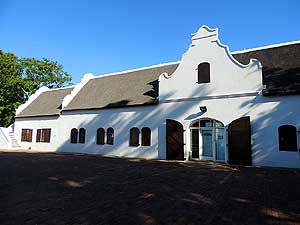
|
-
-
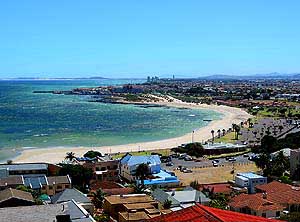
|
-
-
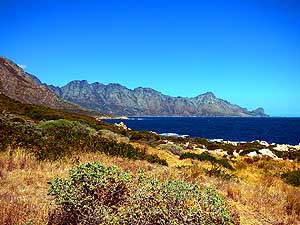
|
-
094
Many buildings in Stellenbosch
- with its glowing white facades are
- typical for the Cape Dutch architectural
- style of the Western Cape
|
-
095 View over Gordon’s Bay beach
- in an eastern corner of False Bay in the
- Western Cape Province
|
-
096
Where the mountain meets the sea:
- Wild coastal stretch between
Gordon’s
- Bay and Kleinmond – in the background
- the Kogelberg mountain
range
|
-
|
-
-
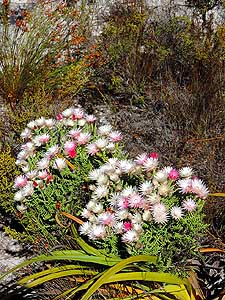
|
-
-
-
-
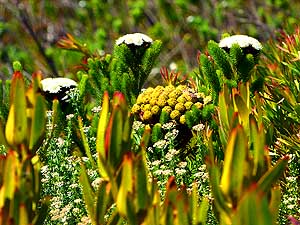
|
-
-
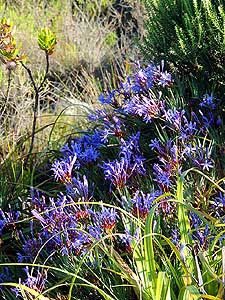
|
-
097
The flowers resembling daisies are
- capable to storage water in
their leaves. They
- belong to the succulent plants and are native
- to
the Fynbos region in the Western Cape
|
-
098
Blossoming Fynbos scrub in the
- Western Cape Region in shiny
- yellow and white …..
|
-
099
….. and blue. The richness of the
- variety in this heathland is
overwhelming
|
-
|
-
-
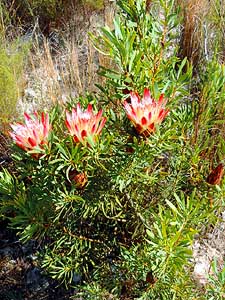
|
-
-
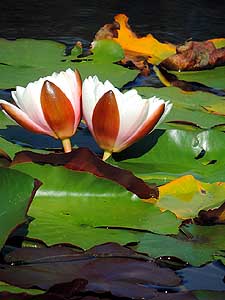
|
-
-
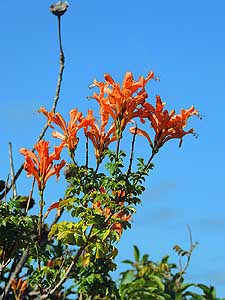
|
-
100
Sugarbushes (Protea) are flowering
- on a bush in the
mountainous Western Cape.
- The King Protea (Protea cynaroides)
- is South Africa‘s national flower
|
-
101
Two water-lilies (Nymphaea)
- unfold their full beauty. There shall be
- worldwide about 50 different species
- (white, pink, red, blue etc.)
|
-
102
The orange blossoms of the
- honeysuckle flower (Lonicera)
are a magnet
- for honeyeater birds (Meliphagidae)
|
-
|
-
-
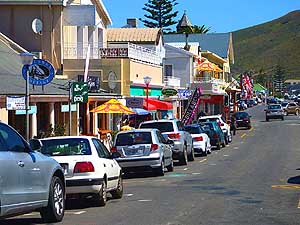
|
-
-

|
-
-
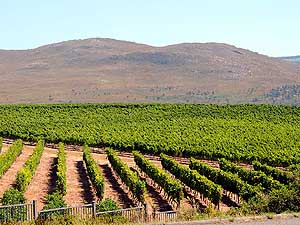
|
-
103
Cafes, shops and restaurants line
- the streets of Hermanus in the Western
- Cape. The town is especially famous for
- its wale watching from June till December
|
-
104 Wine tasting is very popular in the
- Cape Region and not a bad pastime!
|
-
105
Vineyards as far as the eye can reach.
- The Cape wine is
exported across the globe
|
-
|
-
-
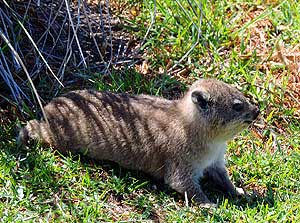
|
-
-
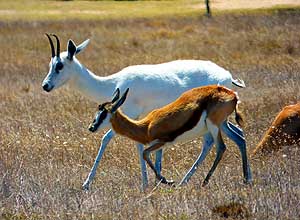
|
-
-
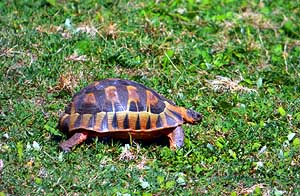
|
-
106
A cute rock hyrax (Procavia
- capensis) is relaxing. It resembles
- outwardly a groundhog/marmot, lives
- mostly on rocky terrain and can reach
- an age of seven to ten years
|
-
107
A rare sight: A white springbok
- (Antidorcas marsupialis) and its fellow
- member of the same species on the tramp.
- It’s actually not an albino but another
- “color phase”
|
-
108
”Sorry – it does not go any faster!“
- says the leopard tortoise
(Stigmochelys
- pardalis) and continues its own way
|
-
|
-
-
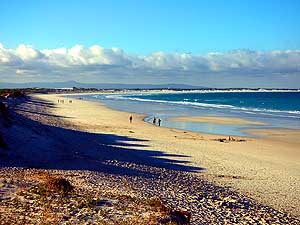
|
-
-
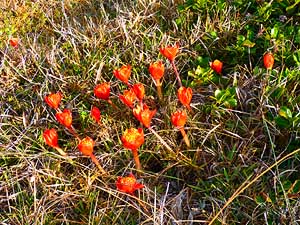
|
-
-
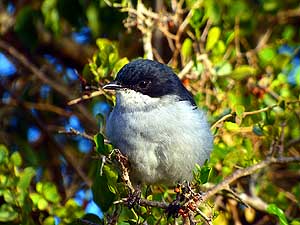
|
-
109
The long and wide sandy beach
- at Struisbaai beach in the
Western Cape
- invites to long strolls. It is the most
- westerly village
along the Indian Ocean
|
-
110
Red blood lilies (Haemanthus
- coccineus) bloom at slopes
near the ocean
- in the Cape region – here at Cape Agulhas,
- the
southernmost tip in Africa
|
-
111
The fiscal flycatcher (Sigelus silens)
- is watching the world from its vantage point
|
-
|
-
-
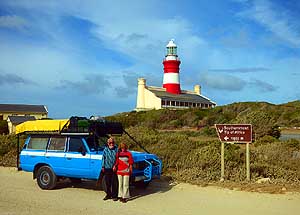
|
-
-
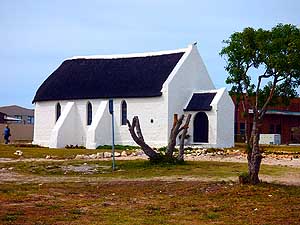
|
-
-
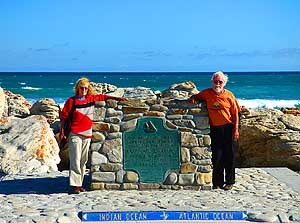
|
-
112
Remembrance picture near the
- lighthouse at Cape Agulhas, the most
- southerly point of the African Continent.
- It has been put into operation for the
- first time on March 1st, 1849
|
-
113
A sense of beauty: The immaculate
- white church in Struisbaai
in its Cape Dutch
- architecture in the Western Cape province
|
-
114
March 1st, 2015: We reached for the
- second time Cape Agulhas,
the most southerly
- tip of the African
Continent and the geo-
- graphical border between the Atlantic and
-
Indian Ocean. The first time
was on March
- 5th, 1992. In the meantime we drove 282’755
- miles
[455’050km] through 128 new countries
|
-
|
-
-
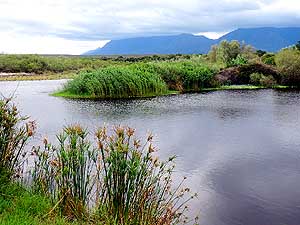
|
-
-
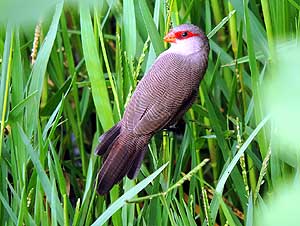
|
-
-
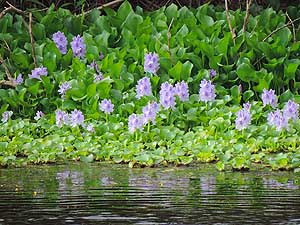
|
-
115
Idyll at the Breede River at
- Bontebok National Park, situated
- 3 miles [5km] southeast of the
- historic little city of Swellendam
|
-
116
A common waxbill (Estrilda astrild),
- passerine bird,
inspects the shore of the
- Breede River in the Bontebok National Park
|
-
117
The shores of the meandering
- Breede River in the Bontebok
National Park
- are covered with common water hyacinths
- (Eichhornia
crassipes). It’s native to the
- Amazon basin and is seen in many places
- as a rampant spreading pest
|
-
|
-
-
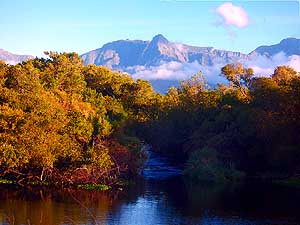
|
-
-
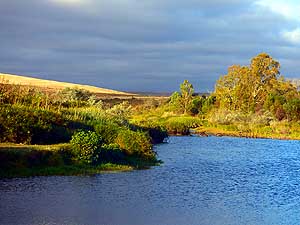
|
-
-
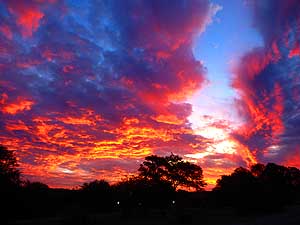
|
- On the Breede River in the Bontebok National Park we experience
the stunning changes of nature at different times of the day
|
-
118
Morning: With the backdrop of the
- Langeberg mountain range,
the Breede
- River meanders through dense undergrowth
|
-
119 Afternoon: The grass is streaked with
- gold in the approaching thundering front
|
-
120
Evening: Dramatic colors paint the sky
|
-
|
-
-
-
-
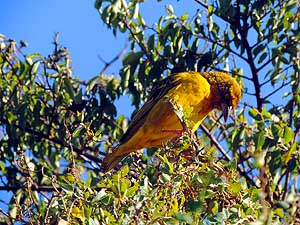 -
|
-
-
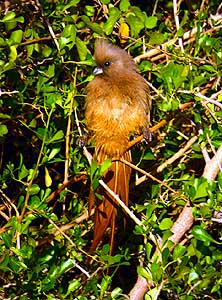
|
-
-
-
-
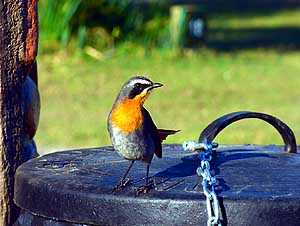
|
-
121
”What is going on?“ The southern
- masked weaver bird (Ploceus
velatus)
- is looking attentively downward
|
-
122
A speckled mousebird (Colius striatus)
- is basking in the first rays of sun
|
-
123 Really sweet: The cape
robin
- (Cossypha caffra), like #116 a passerine
- bird, follows Liliana wherever she goes,
- either on the ground or in the air
|
-
|
-
-
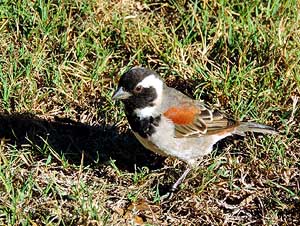 -
|
-
-
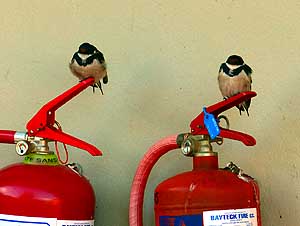
|
-
-
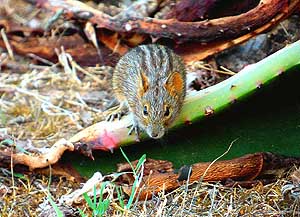
|
-
124
A Cape Sparrow (Passer melanurus)
- is hopping around on
the grass
|
-
125
Every evening, the two white-throated
- swallows (Hirundo
albigularis) sleep on the fire
- extinguishers positioned in the
ablution block of
- the Bontebok “Lang Elsie's Kraal Rest Camp”
|
-
126 ”Is everything clear?“
The striped
- mouse (Rhabdomys pumilio) scurries from
- the bush looking for food and disappears
- in a flash at the slightest movement
|
-
|
-
-
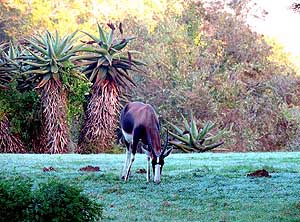
|
-
-
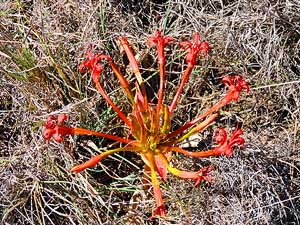
|
-
-
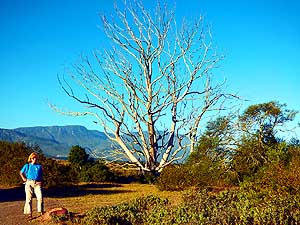
|
-
127
A Bontebok (Damaliscus
- pygargus pygarus) is grazing
peacefully
- on the campsite. Once critically endangered,
- the number of
this antelope in the
- Bontebok National Park has increased
- again to 200 and worldwide to 3‘000
|
-
128
On the Acacia Trail in the
- Bontebok National Park a
honeysuckle
- flower (Lonicera) is sprouting out
- of the dry grass
|
-
129
A big leafless tree rises against an
- electric blue sky in the Bontebok National
- Park making Liliana look very small
|
-
|
-
-
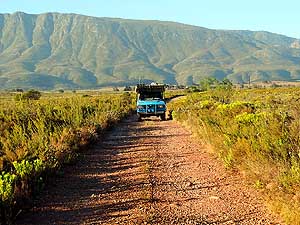
|
-
-
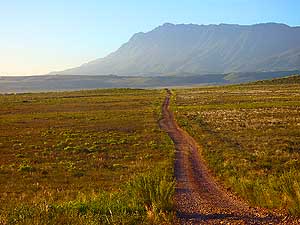
|
-
-
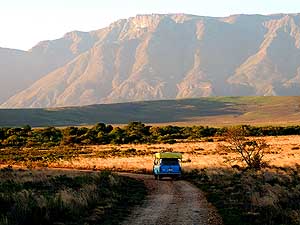
|
-
130
|
-
131
|
-
132
|
- On discovery tour through the Fynbos landscape of the Bontebok
National Park lying at the foot of the majestic
- Langeberg mountain
range. Fynbos flourishes in the temperate climate with winter rains
|
-
-
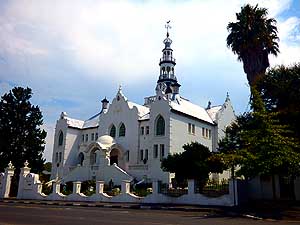
|
-
-
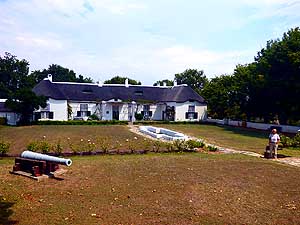
|
-
-
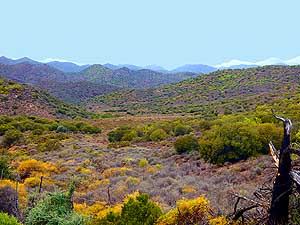
|
-
133
The “Dutch Reform Church” in
- Swellendam belongs to the Cape
Dutch
- architecture buildings. Swellendam is the
- third oldest town in South Africa
|
-
134
Historic ”Drostdy“ in Stellendam
- dates from 1747 and hosts
today a museum
|
-
135
Special bush vegetation dominates
- the landscape in Little Karoo around the
- “Warmwaterberg Spa Resort”
|
-
|
-
-
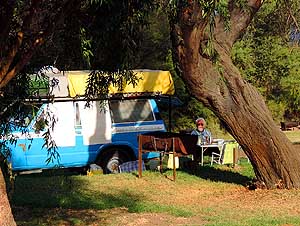
|
-
-
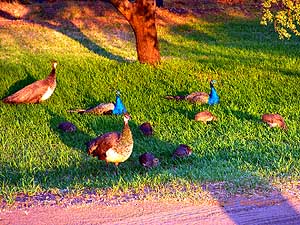
|
-
-
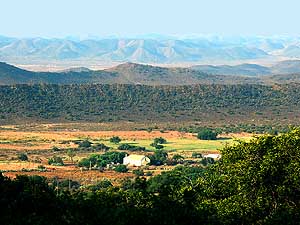
|
-
136
Our peaceful campsite at the
- “Warmwaterberg Spa Resort”
between
- Barrydale and Ladismith in Little Karoo …..
|
-
137
….. where a peacock family
- (Pavo cristatus) strolls
around. The
- brightly colored males rest and the females
- are searching for food with their offspring
|
-
138
View from the foothills of the
- Warmwaterberg mountains over
the
- ”Little Karoo“, a semi-desert region south
- of the Swartberg
mountain range
|
-
|
-
-
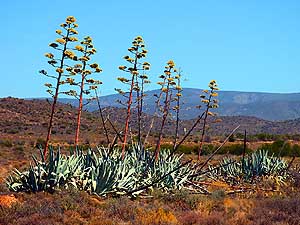
|
-
-
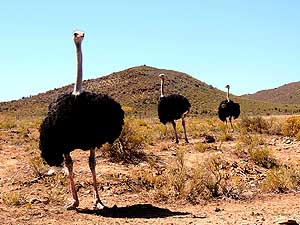
|
-
-
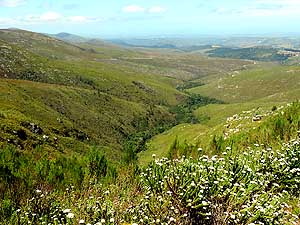
|
-
139
Sisal plants (Avave sisalana) with
- its clusters of yellow flowers are towering
- from the plain. They reach a height from
- 10 to 20 ft. [3 to 6m] and bloom only once
|
-
140
Curious ostriches (Struthio camelus)
- on a Ostrich Farm
near Oudtshoorn.
- These flightless birds can live up to 75 years
|
-
141
Sweeping view over the coastal town
- of Mossel Bay from 2’820
ft. [860m] high
- Robinson Pass on the R328, which
- connects Oudtshoorn
and Mossel Bay
|
-
|
-
-
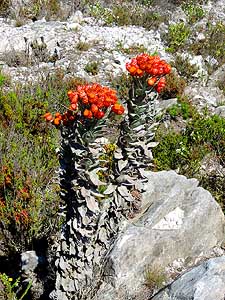
|
-
-
-
-
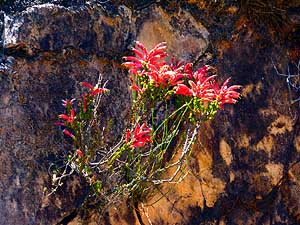
|
-
-
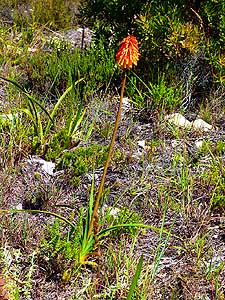
|
-
142
A flowering Fynbos plant on the
- 2’822 ft. [860m] high Robinson
Pass
- in the Outeniqua Mountains
|
-
143
The survival ability of nature: A
- honeysuckle flower (Lonicera)
is blooming out
- of a rock crevice on the 2’822 ft. [860m] high
- Robinson Pass in the Outeniqua Mountains
- between Oudtshoorn and Mossel
Bay
|
-
144
An orange-colored ‚redhot poker’,
- called also tritoma torch
lily or knofflers
- (Kniphofia uvaria), on the Robinson Pass
- between Oudtshoorn and Mossel Bay
|
-
|
-
-
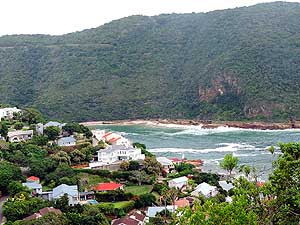
|
-
-
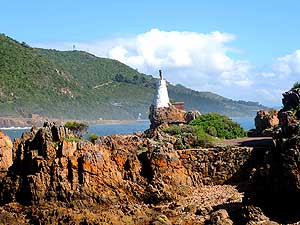
|
-
-
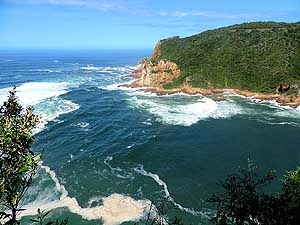
|
-
145
View from the uptown residential area
- ”Knysna Heads“ on the
Garden Route over to
- the “Featherbed Private Nature Reserve” that
- separates the tranquil lagoon formed by the
- Knysna River from the
pounding sea …..
|
-
146
….. the snow-white mini-lighthouse
- at the ”Heads“ that watches
over the
- mouth of the Knysna River …..
|
-
147 ….. and the sandstone
cliffs of the
- „Featherbed Private Nature Reserve“
- that prevent the pounding ocean surf
- from entering the lagoon
|
-
|
-
-
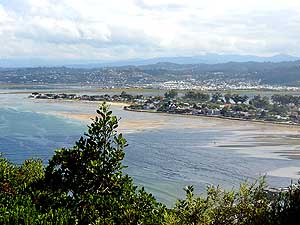
|
-
-
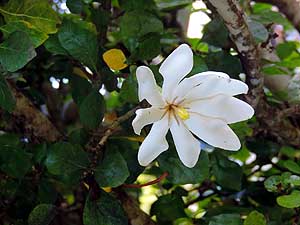
|
-
-
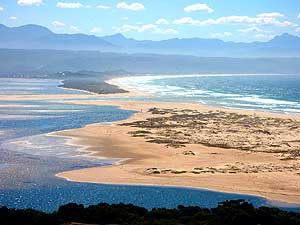
|
-
148
View over the Knysna lagoon
- with “Leisure Island” from the
viewpoint
- Emu Cres on the ”Knysna Heads“
|
-
149
The snow white blossom of the
- Gardenia bush (Gardenia
thunbergia)
|
-
150
Lovely view over the beaches and
- clear blue water of Plettenberg Bay on the
- ”Garden Route”. The Keurbooms River flows
- from
the left (= North) into the sea. In the
- background the Tsitsikamma
Mountains
|
-
|
-
-
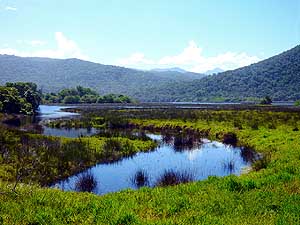
|
-
-
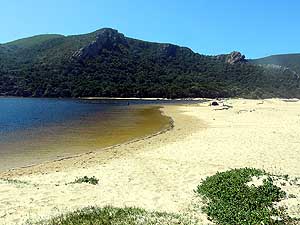
|
-
-
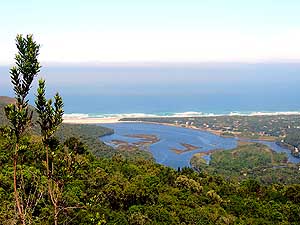
|
-
151
The old road (#R102) through the
- Tsitsikamma National Park to
Storms River
- leads us to the blue shining Groot River that
- meanders
through lush green vegetation …..
|
-
152
….. to a secluded little cove along
- the Groot River near Nature’s Valley
- that invites for a swim …..
|
-
153
….. and to a spectacular panorama
- from the height over the Groot River lagoon,
- the beach and the sea. On the right the
- village of Nature’s Valley
|
-
|
-
-
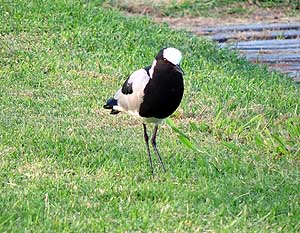
|
-
-
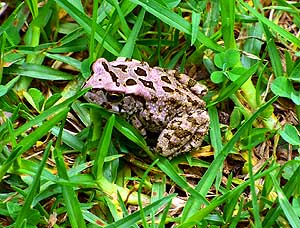
|
-
-
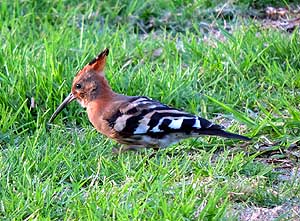
|
-
154
Who is walking so lonely around
- the meadow? – it’s a
blacksmith lapwing
- (Vanellus armatus)
|
-
155
The spotted running frog
- (Kassina maculata). Is it really
- running or just hopping?
|
-
156
The characteristic of the hoopoe
- (Upupa epops) is its
beautiful distinctive
- ”crown“, i.e. feather crest
|
-
|
-
-
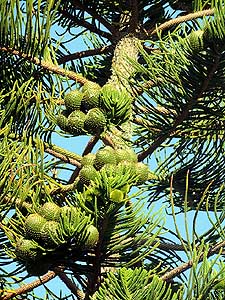
|
-
-
-
-
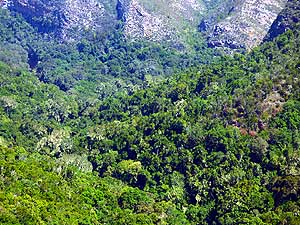
|
-
-
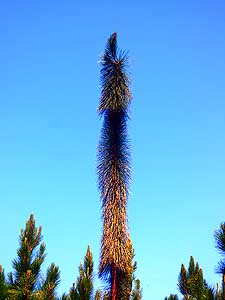
|
-
157
A healthy mountain cypress
- (cedar) (Widdringtonia nodiflora) with
- its clusters of still green closed cones
|
-
158
View into the Groote River valley in
- Tsitsikamma National Park
along the R102,
- not far from Nature’s Valley (see pic. #153)
|
-
159
A pine (Pinus), also known as
- conifer, raises towards the sky
|
-
|
-
-
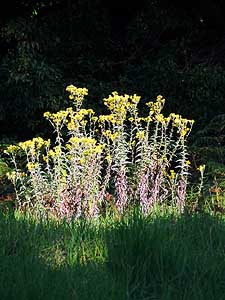
|
-
-
-
-
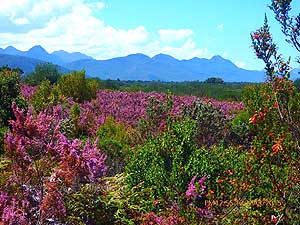
|
-
-
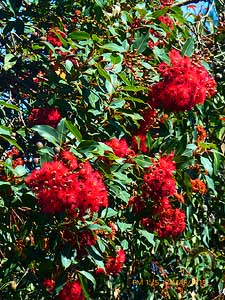
|
-
160
Against the dark backdrop, the
- yellow blossoms of a Fynbos brush
- flower shine even more intensively
|
-
161
When the common heather (erica)
- flowers (Calluna vulgaris) are in full
- bloom, they transform the landscape
- into a beautiful pink carpet
|
-
162
A flowering eucalyptus tree
- (Corymbia ficifolia) with its
- clusters of red blossoms is a
- beautiful example of nature
|
-
|
-
-
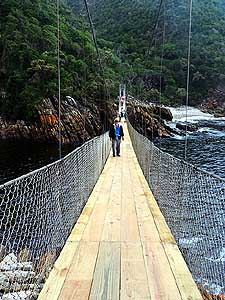
|
-
-
-
-
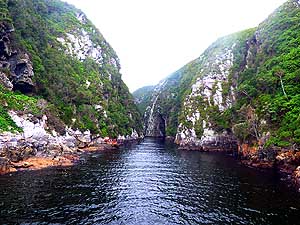
|
-
-
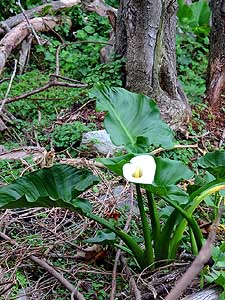
|
-
163
Emil is balancing on the swinging
- suspension bridge that spans
253 ft. [77m]
- across the waters of the Storms River mouth
- in the Tsitsikamma National Park …..
|
-
164 ….. a boat trip through the wild
- Storms River Gorge is regarded as the
- highlight of a visit to the park .....
|
-
165
….. in the humid climate also the
- white calla lily (Zantedeschia
aethiopica)
- with its fleshy huge leaves is growing
|
-
|
-
-
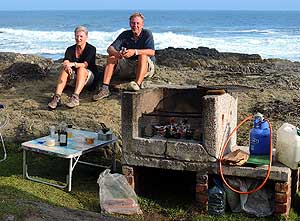
|
-
-
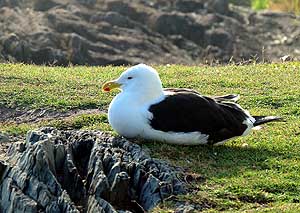
|
-
-
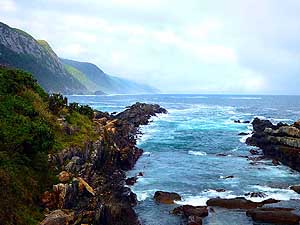
|
-
166
Rika and Robert from Holland,
- exploring Southern Africa for
six months
- with their LandCruiser, enjoy their camping
- life in the Tsitsikamma National Park
|
-
167
The Cape Gull (Larus dominicanus)
- on the cliff has every reason to ‘laugh’
- having nature for itself
|
-
168
The coastal wildness of the Tsitsi-
- kamma National Park covers more than
- 50 miles [80km]. The park was established
- in 1994, and has been amalgamated 2009
- into the Garden Route National Park
|
-
|
- Continuation to the next South African page:
South Africa Part 3
–
March 13th to April 7th, 2015, from Addo National Park to the Lesotho
border
|
-
- The African trip
2013-15:
- CapeVerde: Santiago/Praia
part 1 – November18th to December 13th, 2013
- CapeVerde: Fogo
– Dezember13th to 23rd, 2013
- CapeVerde: Brava
– December 23rd to 26th, 2013
- Cape Verde: Santiago/Praia
part 2 – December 26th, 2013 to February 28th, 2014
- Cape Verde: São Nicolau – February
28th to March 13th, 2014
- Cape Verde: São Vicente/Mindelo part 1
– March 13th to 20th, 2014
- Cape
Verde: Santo Antão/Eastern side part 1 –
March 20th to April 7th, 2014
- Cape
Verde: Santo Antão/Western side part 2 –
April 7th to 10th, 2014
- Cape
Verde: São Vicente/Mindelo part 2 –
April 10th to 29th, 2014
-
Namibia Part 1 –
from Walvis Bay to Windhoek
- Angola Part 1
–
September 26th to October 4th, 2014
- Angola Part 2 –
October 4th to 22nd, 2014
-
Namibia Part 2 –
from Windhoek to the Angolan border, back again and on to
South Africa
- 3rd Major Repair of our
LandCruiser FJ60 - 1982 (due to two broken sideshafts)
|
![]()
